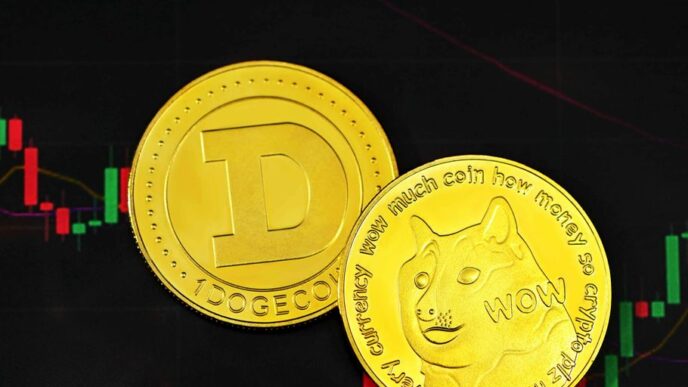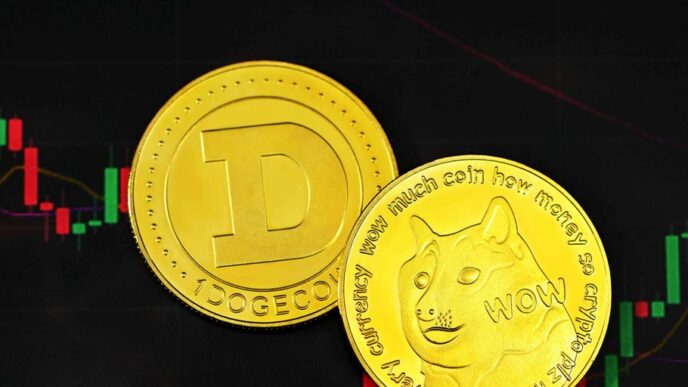Are you confused about the difference between blockchain and cryptocurrency? You’re not alone! With all the buzz around these two technologies, it’s easy to get them mixed up. But fear not, we’re here to help break it down for you. In this post, we’ll explore the key differences between blockchain and cryptocurrency so that you can better understand how they work together (and separately) in today’s digital landscape.
Introduction to Blockchain and Cryptocurrency
Cryptocurrencies are digital or virtual tokens that use cryptography to secure their transactions and control the creation of new units. Cryptocurrencies are decentralized, meaning they are not subject to government or financial institution control. Bitcoin, the first and most well-known cryptocurrency, was created in 2009.
Blockchain is the underlying technology that powers cryptocurrencies. A blockchain is a digital ledger of all cryptocurrency transactions. It is constantly growing as “completed” blocks are added to it with a new set of recordings. Each block contains a cryptographic hash of the previous block, a timestamp, and transaction data. Bitcoin nodes use the blockchain to differentiate legitimate Bitcoin transactions from attempts to re-spend coins that have already been spent elsewhere.
While cryptocurrency is the use of digital assets to buy goods and services, blockchain is the infrastructure that enables this exchange. In other words, without blockchain, there would be no cryptocurrency. Understanding the key differences between blockchain and cryptocurrency is essential for anyone looking to invest in or use either technology.
What is Blockchain?
A blockchain is a distributed database that allows for secure, transparent and tamper-proof record-keeping. It is the underlying technology behind cryptocurrencies like Bitcoin and Ethereum.
A blockchain consists of a growing list of records, called blocks, which are linked together using cryptography. Each block contains a cryptographic hash of the previous block, a timestamp, and transaction data. By design, blockchains are resistant to modification of the data.
Blockchain technology has several potential applications, such as:
- Asset management – Blockchain can be used to track ownership of assets such as property or vehicles.
- Supply chain management – Blockchain can be used to track the movement of goods through a supply chain.
- Payment processing – Blockchain can be used to process payments between parties.
What is Cryptocurrency?
Cryptocurrency is a digital asset designed to work as a medium of exchange that uses cryptography to secure its transactions, control the creation of additional units, and verify the transfer of assets. Cryptocurrencies are decentralized, meaning they are not subject to government or financial institution control. Bitcoin, the first and most well-known cryptocurrency, was created in 2009. Cryptocurrencies are often traded on decentralized exchanges and can also be used to purchase goods and services.
Key Differences Between Blockchain and Cryptocurrency
Cryptocurrencies are digital or virtual tokens that use cryptography to secure their transactions and control the creation of new units. Cryptocurrencies are decentralized, meaning they are not subject to government or financial institution control. Bitcoin, the first and most well-known cryptocurrency, was created in 2009.
Blockchain is the technology that powers cryptocurrencies. A blockchain is a digital ledger of all cryptocurrency transactions. It is constantly growing as “completed” blocks are added to it with a new set of recordings. Each block contains a cryptographic hash of the previous block, a timestamp, and transaction data. Bitcoin nodes use the blockchain to differentiate legitimate Bitcoin transactions from attempts to re-spend coins that have already been spent elsewhere.
Examples of Blockchain and Cryptocurrency
Blockchain and cryptocurrency are often used interchangeably, but there is a big difference between the two. Blockchain is the underlying technology that powers cryptocurrencies like Bitcoin. Cryptocurrencies are digital or virtual tokens that use cryptography to secure their transactions and control the creation of new units.
Cryptocurrencies are built on top of blockchain technology. Bitcoin, the first and most well-known cryptocurrency, was created in 2009 as a decentralized peer-to-peer electronic cash system. Since then, thousands of other cryptocurrencies have been created, all with different features and purposes.
Ethereum, for example, is a decentralized platform that runs smart contracts: applications that run exactly as programmed without any possibility of fraud or third-party interference. Litecoin, on the other hand, is built for fast and cheap payments. There are many other examples of blockchain projects and cryptocurrencies with different use cases.
Benefits:
1. Decentralization: One key benefit of cryptocurrencies is that they are decentralized, meaning they are not subject to government or financial institution control. This can provide greater security and privacy for users as there is no central point of attack for hackers or other malicious actors
Conclusion
Understanding the key differences between blockchain and cryptocurrency can help you make informed decisions when it comes to investing. Blockchain is a revolutionary technology that allows for secure and transparent transactions, while cryptocurrency is a digital currency that utilizes blockchain technology. Both are powerful tools with potential applications in many industries – understanding how they work together will be essential as we move into the future of commerce.













